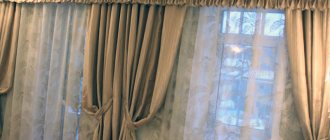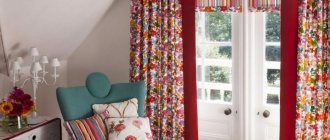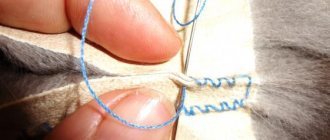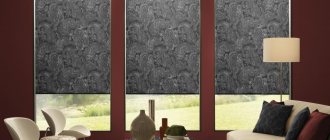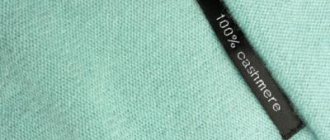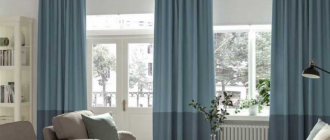A window decorated with a curtain is a bright and eye-catching element of the interior. If the decor is chosen correctly, a curtained window opening creates a feeling of security, comfort and habitability of the space. Completes the interior solution without attracting the eye. To perfectly decorate the windows in your home, you need to make the correct calculation of the length and width of the curtains, and correctly select their style, quality and color. You can easily cope with the last task, but deciding on the size of the canvas is more difficult. After all, if you do the calculations incorrectly, the window opening will look unsightly - the curtain is too long or short, too gathered or stretched, does not cover well or greatly darkens the room. Knowing a few tricks, choosing the size of curtains will not be difficult at all.
Tulle in different rooms
The curtain can correspond to fashion for a long time, because it comes in different types:
- organza;
- muslin;
- veil;
- net;
- cobweb;
- with embroidery or pattern.
Various options are used in rooms, depending on the intensity of use of the curtains. For example, for the kitchen it is better to choose a mesh. This is a durable, moderately attractive fabric. It is resistant to mechanical stress, stains are easily washed off. For the kitchen, choose products that are plain or patterned.
For a child's room, a curtain is selected according to its properties, since in this case the only type is often considered - with a print, printed toys, favorite characters, etc. Pay attention to the strength of the fabric. Lace, printed tulle options, gossamer are less suitable varieties, but they are recommended for use in other rooms: bedroom, living room. In these rooms they also use a veil and organza.
Kisey will stand out from other types of tulle due to its narrow scope. This is a bright and unusual type of material, mainly used to divide space, and also in the living room.
Build factor
The gathering factor (GC) is a value that helps determine how much fabric needs to be gathered across the width. Essentially, this is the allowance for the waves and tails, and it determines how magnificent they will be in the end.
The gathering factor depends on the type of folds formed on the curtain fabric
Before you calculate the width of the tulle for the window, you need to find out what the KS will be. To do this you need to know two quantities:
The width of the footage is calculated using a simple formula:
Amount of fabric = k x curtain rod length
Where k is the assembly (filling) coefficient. For different types of assembly that the braid forms, it will be different:
- Pencil – k = 2.5-3.
- Buffs – k = 1.5 – 2.5.
- “Crow's feet” – k = 2.
- Goblet-shaped, bow-shaped – k = 2.5-3.
Note! The KS must be indicated on the packaging of the curtain tape. Typically the average ratio is 1:2.5. It is suitable for almost any curtain design.
Knowing the CS, all that remains is to calculate the required amount of tissue. If, for example, k = 1.5, and the length of the cornice is 275 cm, then to sew curtains you will need to collect 375 cm (3.75 meters) of fabric (1.5 x 250 cm = 375 cm).
Important. When calculating, it is necessary to add allowances for the side seams. As a rule, add 6 cm, 3 cm for each side seam.
Processing the side cut of the curtain
Combination of curtains and drapes
This combination has been considered fashionable for a long time and is now also often used. This is a classic, and therefore timeless, window design option.
The combination of tulle (curtains) and curtains helps solve various problems:
- the intensity of room lighting is adjusted (high-density products are used in the evening, tulle in the morning);
- the style of the room is emphasized, for which it is important to choose the right type and color of curtains;
- an emphasis is placed on bright decorative elements, including curtains.
Recommendations to ensure the best results:
- the density of the material of tulle and curtains should be different: use transparent curtains (organza or veil), opaque curtains, the higher the density, the better, in this case the window design is based on the contrast of the properties of the products;
- it is necessary to choose the right pattern: it should not be on one of the curtains, but it is allowed to hang products on the window in the same style, only in this case the pattern should be in harmony, be the same for materials of different types;
- a contrast of shades is created: the tulle is light, because it covers the window even during the day, so it should be characterized by high light transmittance, and the curtains in most cases are much darker (for example, shades of brown), while the main selection criterion is the ability to retain light.
Variety of assortment
Manufacturers offer hundreds of different options for curtain hooks. But among them there are several main types:
- Plastic, metal and metal-plastic.
Plastic models are characterized by low price, lack of noise when moving curtains along the curtain rod guides, and resistance to external influences, due to which they can be used not only in residential premises, but also in the kitchen or bathroom. However, they also have some disadvantages. Over time, under the influence of the weight of the canvas, they become deformed, easily break if handled carelessly, are not able to withstand heavy weight, and therefore are only suitable for attaching light curtains.
Metal products are more reliable in operation, hold heavy curtains well, and last much longer. But they are not without some disadvantages, the main one of which is the unpleasant sound that occurs when moving the curtains. In addition, if there is high humidity in the room, they may be susceptible to corrosion, and therefore are not suitable for all rooms.
Metal-plastic hooks have the advantages of both types, while devoid of most of their disadvantages, and therefore are the most optimal option for attaching curtains.
The first ones are hidden in the folds of the fabric or under the cornice strip, and therefore are not visible. The latter, on the contrary, are clearly visible - they are a decorative element that additionally decorates the composition of curtains and cornices.
The open-type fastening elements have a simple design, making it easy and quick to hang curtains on them. But they have a significant drawback - with sudden movements of the curtains when curtaining, they can jump off the hooks. But the closed-type fasteners reliably hold the curtain fabric due to the presence of a special latch-lock, but it is more difficult to hang the fabric on them.
Transitional hooks for curtains are the connecting link between the loops or eyelets on the curtain, clips and curtain rod, while the main ones are an independent fastener and do not require additional elements. A striking example of the basic type of fastening is runners for profile cornices.
Each type of hook has its own design features, advantages and disadvantages. But the question of which products are best to purchase is not the only one that arises when purchasing them. For many buyers, it becomes a problem how many hooks need to be purchased and at what distance from each other they need to be attached.
Criteria for choosing tulle depending on the interior
The main parameters that influence the design of the room:
- type of fabric, weaving method and even production technology, which affects the external characteristics of the product;
- curtain color.
The presence of a pattern is also determined by the features of the interior.
Possible ways to design windows taking into account the design of the room:
- classic style: printed and plain material (veil, organza);
- Baroque: ruffles, multi-layered tulle curtain;
- country: the use of natural fabrics (cotton, linen) is suitable for decorating a window on the veranda of a country house;
- Provence: small flowers, curtains should be without design frills, as simplicity and floral motifs are important;
- minimalism: an important condition for window design is the absence of a large number of decorations on the curtains, the design on the fabric should be discreet and simple;
- to emphasize the loft style, choose products without ruffles, frills, lace, curtains must let light through, so they often use classic rectangular curtains in pastel colors, and more often choose products without a pattern;
- A summer terrace can be decorated with plain curtains made from the most airy fabric (organza).
How much fabric is needed to sew curtains?
Tulle fabrics
To determine the amount of fabric needed to sew curtains, you first need to measure the width of the cornice. A good, suitable fold factor for tulle fabrics is 3. For example, for a 1.5 meter cornice you will need 4.5 meters of tulle. The minimum decent coefficient is 2.
Curtain fabrics
For thick curtain fabrics, the coefficient may be less - 2.5, minimum 1.5. Do not forget that the beauty of a fabric consists not only and not so much of its design. The texture of the fabric, its plasticity, the play of the folds is an equally important detail. Therefore, saving on the width of the canvas should be done with a sense of proportion. In addition, the more curtain fabric, the better the protection from light.
How to hang tulle without a cornice beautifully
The main reason for choosing other methods of attaching curtains is the low strength of the wall. This option is considered if the entire surface of the supporting structure is protected by plasterboard. As a result, the opportunity to secure the cornice disappears. This is due to the significant load of this element.
The pressure on a weak facing material increases due to a curtain (curtains, drapes) hanging on the eaves.
Another reason for choosing an alternative method of mounting on a window is the purchase of a new item among fabrics, for which it is difficult to find a suitable cornice model. But it is important to immediately decide which option will be used: auxiliary means for fastening the fabric or a cornice, since in the first case it is often necessary to violate the integrity of the wall; installing a cornice in this place will then be problematic.
Possible methods of decorating a window using auxiliary means:
- Point mounting. At the same time, hooks and clips are installed. To fix them, a drill is used, which allows you to make holes in the wall where self-tapping screws with dowels will be inserted. The choice of fastening elements is carried out taking into account the characteristics of the fabric: the heavier it is, the more securely the hooks should be installed. Curtains are hung on them crosswise, folds are created, and tiebacks are used. If you drape a window in this way, you can divert attention from the fastening elements used.
- Textile adhesive tape. One side of it is fixed on the wall, the other is sewn to the curtain. This method is suitable for cases when you need to hang a single-layer tulle curtain. A bulky cornice is not considered due to the inconsistency with the appearance of the fabric.
- Metal rod on the wall. It remains invisible, because it will be covered with curtains. Magnets are used to secure the curtain itself. This option is suitable for cases where the curtain is light. For example, it is often chosen when you need to close a window on the landing of a private cottage. In this case, the magnets will be visible, which means it is better to choose a darker curtain.
- String or fishing line. The principle of fastening is the same as in the case of a metal rod. Only on a fishing line can you hang products using special hooks. The disadvantage of this method is the sagging of the fishing line. To avoid such consequences, you need to fix it along its entire length (the installation step of the fastening elements is reduced).
How to measure correctly?
First trick
— correct taking of measurements from the window opening. To measure it, you first need to decide on the type of length:
- to the window sill - the bottom line of the curtain is 1 centimeter from the window sill (it should move freely and unhindered);
- below the window sill - the decor overlaps the line of the window sill, its lower edge hangs down by 12-15 cm (this window looks more beautiful);
- to the floor - there should be a gap of 1-1.5 cm between the canvas and the floor covering to protect the bottom of the decor from contamination and rapid wear (this is a classic option, but it is allowed, if required by the interior design, for the canvas to fall onto the floor).
Important! The specified measurement rules will only show what the length of the curtain should be, but not the material consumption for it. You need to remember this fact in case the curtains are made independently, and not bought ready-made.
Second trick
- select the length of the cornice. To do this, you will need to measure the width of the window opening. The decor looks beautiful if the cornice protrudes 15 cm on both sides of the window. Suppose the opening width is 150 cm, then the length of the cornice is calculated as follows:
This is a classic calculation option. It assumes that the geometry of the room is correct. But this is rare. More often in a room, a wide window is located on a narrow wall, or a narrow window opening is lost against the background of a large wall. What to do? The imbalance is eliminated by changing the increase coefficient. For wide walls, add not 15 cm, but 17-23 cm. For narrow walls, 8-13 cm. It is better to take measurements with a metal tape measure. It more accurately and easily imitates a barbell. Place it against the wall at the height where the accessory should be attached and evaluate the view. When calculating the length of the rod, the tips are not taken into account.
Third trick
- We hang the cornice correctly. The accessory has its own specific place on the wall. The bar is attached to brackets, which are fixed above the line of the window opening at a distance of 7.5-13 cm. Typically, in apartments with low ceilings, the window opening is located almost under the ceiling. Then it is better to retreat 7.5 cm from the top line. If the ceilings are high, then the distance from the ceiling to the window line is large - 45-55 centimeters. In this case, the cornice is hung at a distance of 12.5-13 cm. We install the rod, arm ourselves with a tape measure and take measurements along a straight line.
Types of curtain rods for tulle
Main advantages of the method:
- the ability to hide the edge of a draped product where the curtain tape is sewn;
- reliability of curtain fastening.
There are different types of cornices, which allows you to choose the option that is most suitable for assembly and color.
Ceiling and rod
The method of fixation is to the ceiling, for which self-tapping screws and dowels are used. For the standard type of this design, two fastening elements are used. But there are also flexible curtain rods. Other varieties: single and multi-level cornice. The latter of these is used to create modern multi-layer curtains. The ceiling cornice allows you to get a curtain of any length, including up to the floor. This method is used to delimit space.
The rod analogue is a standard option. It is fixed using brackets installed on the sides of the window in its upper part.
The product is hung on a rod located between them.
Baguette and profile
The product consists of a decorative strip, a hidden profile, and additional fastening. It allows you to hide the top edge of the curtain and hooks. When choosing such a cornice, take into account the characteristics of the decorative strip.
The profile analogue is used to create a multi-layer combination of products. To prevent it from collapsing or breaking, it is recommended to use only an aluminum product.
Telescopic cornice
This is a folding product, most often used to decorate a small window. As a result, it becomes possible to adjust its length. Installation is carried out according to the principle of spacers that extend to the side. It is recommended to use this option to secure light tulle.
Roman curtain rod
The main feature is the presence of a lifting mechanism (manual, automatic) that regulates the height of the lower edge of the curtain. There is a chain on the side to manually adjust the position of the fabric. If the cornice is automated, the kit includes a control unit and remote control.
Deciding on the length of the curtains
The length of the curtain is usually understood as the distance from the rod to the level that was selected. This parameter is determined in accordance with the style of the interior and the individual preferences of the owners. Curtains can be floor-length and even lay in a train, and can also be located in the window sill area. Along with this, the method of processing the upper edge is taken into account.
It should also be understood that over time, curtains require washing, especially those made from natural materials. After all, they have the ability to “sit down,” that is, to decrease in size. And this figure can reach 10%, even more. To avoid unpleasant consequences, you need to think about the shrinkage allowance, namely, add 5-8 cm to “be on the safe side.”
How to calculate the length of tulle
Possible options:
- 1-2 cm from the floor covering (you need to add an allowance to these values);
- up to 10 cm from the floor covering - a more practical way to decorate a window, it does not get dirty so actively;
- to the floor with a small margin, folds are formed, and it is not necessary to accurately measure the height of the curtain, a small error does not matter.
For comparison, to find out the width of the curtain, take into account the gathering factor. To determine the height of the product, you need to measure the distance from the flooring to the cornice (those parts where hooks are provided) with a measuring tape.
How to take measurements to choose curtain size
To determine the size of your curtains, you first need to determine which curtain rod you will use and where the curtain rod will be located. This is important because we will take subsequent measurements from the cornice.
Take a tape measure and take measurements as shown in the picture. Don't forget to write down all readings. Take measurements to the nearest centimeter.
So:
- Measure the length of the curtain rod. (In fact, this will be the width of the window plus the indents on both sides of the window borders on which the cornice protrudes.) Measure the length of the cornice, within the limits of the curtain rod hangers, since the curtain fabric will not extend beyond them. If you have a different type of curtain rod and the curtain can move along its entire length, measure the full size. Let's call this size the Working length of the cornice.
- Measure the distance from the cornice to the floor
- Measure the distance from the eaves to the top edge of the window sill
Tips and tricks from designers
Before purchasing, you can study possible window design options from the photo. There are ways to form curtain folds: fixed (no need to tie up the fabric), using fastening elements, special means (magnets, staples). The last method allows you to adjust the parameters of the tulle by tying it and attaching magnetic elements. These actions can be performed during the operation of the curtain. If necessary, tied curtains, as well as products fixed with magnets, are freed from fastenings.
What is needed for accurate measurements
To measure the dimensions of the window and wall, it is best to use a wooden/steel meter or metal tape measure. If they are missing, a measuring tape will do. This will allow you to take all measurements as correctly as possible, without taking into account deflections, and select the correct size of curtains.
In order to avoid errors during the work process, it is important not only to carefully take measurements, but also to use the same measuring instrument for taking measurements and cutting fabric. Sometimes on different tape measures the spread can be up to 1.5 cm per meter.
All received data must be recorded. It is best to make a schematic drawing of the wall with a window opening and cornice in advance, and then apply the measurements taken to it.
Height
If you want to receive a finished product and order processing of tulle and (or) curtains along with the purchase of a cut for sewing, then you need to measure the height.
We put the hook on the cornice, take a tape measure and measure the height FROM THE HOOK to the desired length.
Why to the required length?
Because everyone has preferences in this matter.
- Some people like the product to reach the floor, then we measure from hook to floor.
- The most practical, and also the most ordered, are those products that do not “sweep” the floor. In this case, subtract 2 centimeters from the floor.
- In public spaces, I suggest removing even more - up to five centimeters, for greater practicality.
- There is another option. This is an overlap on the floor. This product gives a noble and lush look. We measure from the hook to the floor + 15 -20 centimeters for the overlap.
Correct measurements
An important step in calculating the material for curtains is the correct measurement of the window.
The length and width of the curtain depends both on the parameters of the window and on the height of the cornice relative to the floor.
There is no general formula for calculation and it will be individual for each type of fabric. For the most accurate calculation, you need to know the following parameters:
- cornice length;
- curtain width;
- curtain length;
- the necessary supply for sewing on the braid;
- repeat of the drawing.
Rapport is the distance between repeating elements of a pattern. You need to know this so that when cutting the curtains, both canvases turn out identical.
It is better to take measurements using a metal tape measure. Tailor's cm is not very accurate and convenient.
Using the formula, you can calculate the fabric consumption per bow fold, then multiply the resulting footage by the number of planned folds.
So, everything is clear with the terms, we can move on to measurements.
- Length of cornice. It is important that by the time you calculate and purchase the fabric, you already know exactly which model will hold the new curtains. If the cornice is wall-mounted, its length is measured strictly from tip to tip, height - from the top border of the tube to the floor. If the cornice is ceiling, the length should be measured from edge to edge, and the height - from the bottom edge to the floor. You should not take measurements “by eye”; fix the cornice on the wall and only then pick up a tape measure.
- Curtain width. The length of the cornice from tip to tip is taken as a basis. If there are two curtains, the value must be divided in half.
